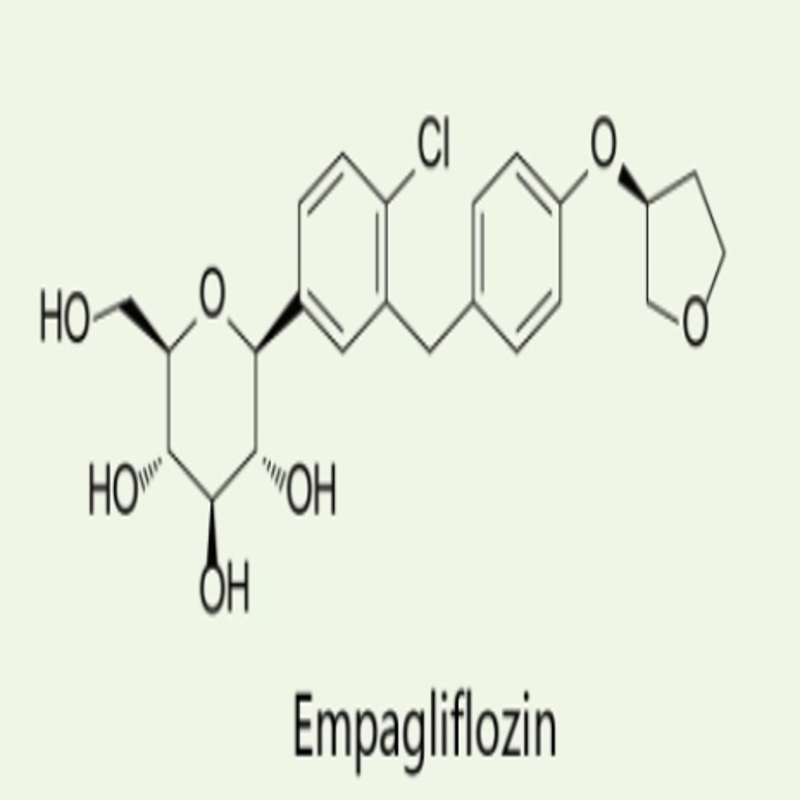-
Categories
-
Pharmaceutical Intermediates
-
Active Pharmaceutical Ingredients
-
Food Additives
- Industrial Coatings
- Agrochemicals
- Dyes and Pigments
- Surfactant
- Flavors and Fragrances
- Chemical Reagents
- Catalyst and Auxiliary
- Natural Products
- Inorganic Chemistry
-
Organic Chemistry
-
Biochemical Engineering
- Analytical Chemistry
- Cosmetic Ingredient
-
Pharmaceutical Intermediates
Promotion
ECHEMI Mall
Wholesale
Weekly Price
Exhibition
News
-
Trade Service
Type 2 diabetes is becoming a global burden
.
Diabetes is the 7th leading cause of death, ignoring its secondary complications, but the 3rd leading cause of death when secondary complications are considered
Type 2 diabetes is becoming a global burden
Soy products have long been considered a source of high-quality protein and healthy fats
.
The low incidence of obesity and related metabolic diseases in Asian populations is thought to be at least partly attributable to high soy intake, a characteristic component of Asian diets
The low incidence of obesity and related metabolic diseases in the soy -based Asian population is thought to be at least partly attributable to high soy intake, and a soy-based diet increases insulin sensitivity and reduces insulin requirements
Soy intake had no overall effect on improving fasting blood glucose or insulin concentrations
In the aforementioned meta-analyses, we discussed several heterogeneities related to the gender and ethnicity of the participants and the type and intake of soy foods in each study
This study investigated the relationship between dietary intake of soy and diabetes risk in a prospective study, the Japan Cancer Risk Assessment Collaborative Cohort Study (JACC Study), which included 21,925 people aged 40-79 Healthy Japanese men and women between the ages
.
We divided the frequency of tofu consumption into three groups: less than 3 times a week, 3 to 4 times a week, and almost once a day
This study investigated the relationship between dietary intake of soy and diabetes risk in a prospective study, the Japan Cancer Risk Assessment Collaborative Cohort Study (JACC Study), which included 21,925 people aged 40-79 Healthy Japanese men and women between the ages
Table 1 shows sex-specific mean and diabetes risk factor prevalence at baseline based on intake of different types of soy foods
During the 5-year follow-up period, we identified 593 new cases of type 2 diabetes (302 males and 291 females)
.
Table 2 shows the ORs (95% ci) for type 2 diabetes according to soy food intake
During the 5-year follow-up period, we identified 593 new cases of type 2 diabetes (302 males and 291 females)
The association between soy food and type 2 diabetes risk had no significant interaction with BMI ( ≥25 kg/m2 , ; p > 0.
05 for interaction) (Table 3)
.
Of note, however, the multivariate ORs (95%CI) for the highest versus lowest type 2 diabetes risk among overweight women and lean were 0.
53 (0.
31-0.
91; p = 0.
03 for trend) and 0.
80 (0.
53-1.
23; trend p = 0.
31) , multivariate OR for the highest and lowest type 2 diabetes risk for miso soup intake was 3.
21 (1.
19-8.
67; trend p = 0.
02 ) in overweight and lean men, respectively ) and 0.
65 (0.
39-1.
08; trend p=0.
11)
.
The association between soy food and type 2 diabetes risk had no significant interaction with BMI ( ≥25 kg/m2 , ; p > 0.
05 for interaction) (Table 3)
.
There was no significant interaction with BMI ( ≥25 kg/m 2 ≥ 25 kg/m 2 2 ; p interaction > 0.
05) (Table 3)
.
p However, it is worth noting that the multivariate OR (95% CI) for the highest and lowest type 2 diabetes risk for tofu intake was 0.
53 (0.
31-0.
91; trend in overweight women in lean women), respectively, in overweight women with lean women The multivariate ORs (95% CI) for the highest and lowest risk of type 2 diabetes in weak women were 0.
53 (0.
31-0.
91; trend was in overweight women , lean lean p = 0.
03) and 0.
80 ( 0.
53-1.
23; p = 0.
03) and 0.
80 (0.
53-1.
23; p = 0.
31 for trend) , the multivariate OR for the highest and lowest type 2 diabetes risk for miso soup intake was 3.
21 in overweight and thin men, respectively (1.
19-8.
67;trend p = 0.
31) trend p = 0.
02) and 0.
65 (0.
39-1.
08; trend p = 0.
11)
.
Likewise, no significant interaction was found for women's menopausal status, and an inverse association between tofu intake and risk of type 2 diabetes was found ( p -interaction = 0.
34) ( Table 4 )
.
The multivariate OR (95% CI) comparing almost daily with <3 weekly tofu intake was 0.
70 (0.
36-1.
40; p for trend = 0.
30) in premenopausal women and 0.
64 (0.
43-0.
93; ptrend = 0.
02)
.
34) ( Table 4 )
.
The multivariate OR (95% CI) comparing almost daily with <3 weekly tofu intake was 0.
70 (0.
36-1.
40; p for trend = 0.
30) in premenopausal women and 0.
64 (0.
43-0.
93; ptrend = 0.
02)
.
Likewise, no significant interaction was found for women's menopausal status, and an inverse association between tofu intake and type 2 diabetes risk was found ( p -interaction = 0.
34) ( p Table 4 )
.
The multivariate OR (95% CI) comparing almost daily with <3 weekly tofu intake was 0.
70 (0.
36-1.
40; p for trend = 0.
30) in premenopausal women and 0.
64 (0.
43-0.
93; ptrend = 0.
02)
.
In this prospective population-based cohort study of Japanese men and women, we found that among soy foods (tofu, boiled beans, and miso soup), tofu intake was associated with a reduced risk of type 2 diabetes in women but not in men
.
This association tends to be more pronounced in overweight and postmenopausal women than in lean and premenopausal women
.
Original source:
Yan et al.
Soy Intake and Risk of Type 2 Diabetes Among Japanese Men and Women: JACC Study.
Front Nutr.
2021; 8: 813742.
Front Nutr.
Published online 2022 Jan 10.
doi: 10.
3389/fnut.
2021.
813742 10.
3389/fnut.
2021.
813742 doi: 10.
3389/fnut.
2021.
813742.
Leave a message here







